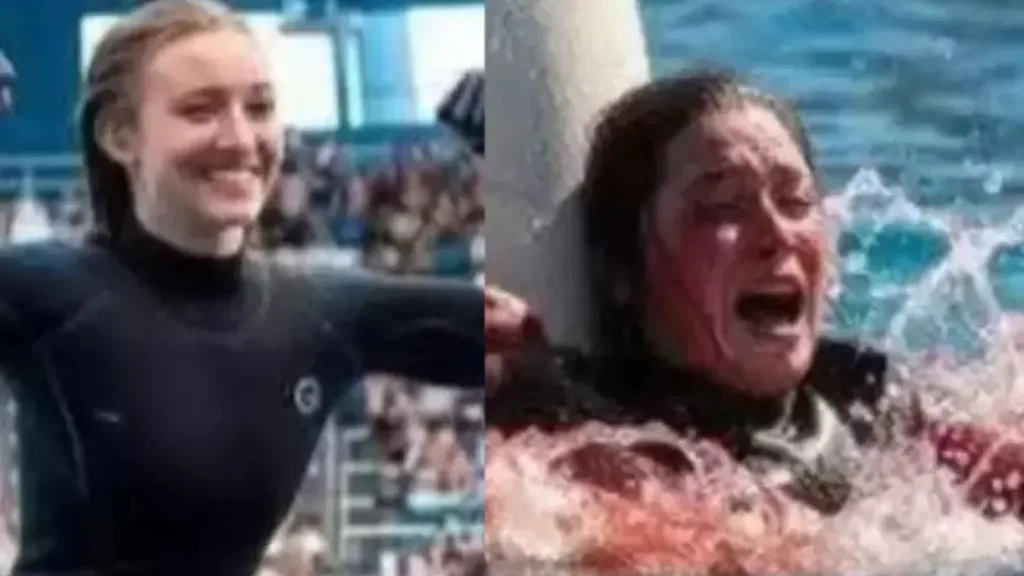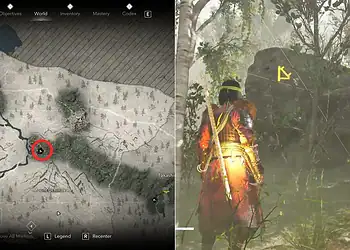Jessica orca incident was exposed as an AI-generated hoax. No trainer named Jessica Radcliffe exists. Learn how fake viral videos spread misinformation and the real orca attacks that inspired this fabrication.
The internet has been buzzing with a disturbing video claiming to show Jessica Radcliffe, a 23-year-old marine trainer, being killed by an orca during a live performance. But here’s the shocking truth: Jessica Radcliffe never existed, and the entire incident is a sophisticated AI-generated hoax that has fooled millions of viewers across social media platforms.
Days after a clip went viral on TikTok, allegedly showing Radcliffe, a whale trainer, being killed by an orca during a performance in front of a live audience, it turns out the entire episode was a hoax. No official records, news reports, or credible sources show that Radcliffe even existed.

This case represents one of the most successful AI-generated misinformation campaigns to date, combining archival footage, artificial voices, and elements from real-life tragic incidents to create a convincing yet completely false narrative that has spread rapidly across social media platforms.
Table of Contents
Jessica Orca Incident: The Complete Hoax Breakdown
The viral video that has shocked millions of viewers is nothing more than an elaborate digital fabrication. There is no evidence that the attack even took place, with the video being an AI-generated fabrication, according to multiple reports. Experts examined the footage and found that it featured AI-generated voices combined with archival footage.
How the Hoax Was Created
The sophisticated deception involved several key components:
AI-Generated Content Elements
- Artificial voices: Computer-generated narration designed to sound authentic
- Archival footage: Real marine park footage repurposed for the fake story
- Digital manipulation: Seamless editing to create a believable narrative
- Emotional triggers: Fabricated details designed to heighten emotional impact
The Fake Backstory
The original video, which spread across the internet like wildfire, claimed to show Radcliffe performing alongside an orca in a whale show at Pacific Blue Marine Park. The video said that she was killed during the set, with another video alleging the attack was triggered by menstrual blood—with experts noting that such details are common in fake stories to heighten the emotional impact.
Real Orca Attacks That Inspired the Hoax
While the Jessica Radcliffe story is completely fabricated, the AI video did appear to take inspiration from two real-life orca killings that occurred:
Dawn Brancheau’s Tragic Death (2010)
| Detail | Information |
|---|---|
| Victim | Dawn Brancheau, 36 years old |
| Location | SeaWorld Orlando, Florida |
| Orca | Tilikum |
| Date | February 24, 2010 |
| Circumstances | Dragged underwater by her hair during a show |
| Media Coverage | Featured in 2013 documentary “Blackfish” |
Brancheau was killed by Tilikum, an orca at SeaWorld Orlando. The 36-year-old had been dragged by her hair underwater, where the whale repeatedly struck her in front of an audience. Brancheau’s death was explored in the 2013 documentary Blackfish.
Alexis Martínez’s Fatal Encounter (2009)
| Detail | Information |
|---|---|
| Victim | Alexis Martínez, 29 years old |
| Location | Loro Parque, Canary Islands |
| Orca | Keto |
| Date | December 24, 2009 |
| Cause of Death | Internal bleeding and injuries |
| Outcome | Rushed to hospital but died from injuries |
Martínez, 29, was an orca trainer at Loro Parque on the Canary Islands who was involved in an incident with a whale named Keto. He was rushed to the hospital and died of internal bleeding and injuries.
Why the Jessica Radcliffe Hoax Spread So Successfully
Psychological Factors Behind Viral Misinformation
Experts pointed out that the similarities to the real deaths were one of the reasons the fake video was able to gain traction, as oftentimes using real or recognizable incidents makes the false story feel more legitimate.
Key Success Factors:
- Emotional Impact: Shocking content that triggers strong emotional responses
- Familiar Elements: Drawing from real incidents, people may remember
- Technical Sophistication: High-quality AI generation that appears authentic
- Social Proof: Rapid sharing creates false legitimacy through numbers
Social Media Amplification
The hoax gained massive traction across multiple platforms:
- TikTok: Primary platform for initial viral spread
- Facebook: Secondary sharing and discussion
- Twitter/X: Fact-checking and debunking efforts
- YouTube: Reaction videos and analysis content
Red Flags That Exposed the Hoax
Investigative Evidence
Careful investigation revealed multiple inconsistencies:
Missing Official Records
- No News Reports: No credible media coverage of the incident
- No Death Records: No official documentation of Jessica Radcliffe’s existence
- No Marine Park Confirmation: Pacific Blue Marine Park could not be verified
- No Emergency Response Records: No 911 calls or hospital admissions
Technical Analysis
- AI Voice Detection: Audio analysis revealed computer-generated speech patterns
- Video Inconsistencies: Experts found editing artifacts and impossible camera angles
- Contextual Errors: Details that don’t match standard marine park operations
The Dangerous Impact of AI-Generated Misinformation
Broader Implications for Society
This hoax represents a concerning trend in digital misinformation:
Technological Concerns
- Deepfake Evolution: Increasingly sophisticated fake content creation
- Detection Challenges: Harder to identify artificial content
- Widespread Accessibility: AI tools are becoming available to the general public
- Speed of Creation: Fake content can be produced faster than ever
Social Consequences
- Erosion of Trust: Public skepticism of all video content
- Emotional Trauma: Viewers experiencing genuine distress from fake content
- Resource Waste: Time and energy spent investigating false claims
- Platform Challenges: Social media is struggling with content moderation

How to Identify AI-Generated Hoaxes
Critical Evaluation Checklist
| Red Flag | What to Look For |
|---|---|
| Source Verification | No credible news outlets reporting |
| Official Records | Lack of documentation or official statements |
| Technical Quality | Unnatural voice patterns or video inconsistencies |
| Emotional Manipulation | Sensationalized details designed for shock value |
| Verification Attempts | No corroborating evidence from multiple sources |
Fact-Checking Resources
Before sharing shocking content, verify through:
- Snopes.com: Comprehensive fact-checking database
- Associated Press Fact Check: Professional journalism verification
- Reuters Fact Check: International news organization verification
- Local News Sources: Regional outlets that would cover local incidents
- Official Statements: Marine parks, government agencies, hospitals
Real Orca Attack Statistics and Safety Measures
Actual Incident Data
While the Jessica Radcliffe story is fake, real orca attacks have occurred:
Historical Incidents (Captivity)
- Total Deaths: 4 confirmed fatalities in captivity
- Tilikum-related: 3 deaths (including Dawn Brancheau)
- Other Orcas: 1 additional death (Alexis Martínez)
- Wild Attacks: Zero confirmed fatal attacks on humans in the wild
Safety Improvements
- Enhanced Protocols: Stricter trainer safety measures
- Physical Barriers: Improved facility design
- Training Changes: Modified interaction procedures
- Emergency Response: Better medical response systems
Read More- Zendaya Net Worth $30M: From Disney to Dune Fortune
FAQs
Was Jessica Radcliffe a real person?
No, Jessica Radcliffe never existed. Extensive searches reveal no official records, news reports, or credible sources confirming the existence of any marine trainer by that name who died in an orca attack.
Is the Jessica orca incident video real?
The Jessica Radcliffe orca attack video is completely fake and AI-generated. Experts have confirmed it features artificial voices combined with archival footage to create a fabricated incident.
How can I tell if an orca attack video is real or fake?
Check for official news coverage, verify the marine park exists, look for official statements from authorities, and be suspicious of videos with sensationalized details or emotional manipulation tactics.
The Psychology Behind Viral Misinformation
Why People Share Without Verifying
Several psychological factors contribute to the rapid spread of false information:
Emotional Response Over Logic
- Shock Value: Disturbing content triggers immediate emotional reactions
- Empathy Activation: People feel compelled to warn others
- Moral Outrage: False stories often contain elements that trigger anger
- Social Responsibility: Desire to raise awareness about important issues
Cognitive Biases
- Confirmation Bias: Content that confirms existing beliefs spreads faster
- Availability Heuristic: Recent or memorable events seem more likely
- Social Proof: High sharing numbers suggest legitimacy
- Authority Bias: Professional-looking content appears more credible
Platform Responsibility and Content Moderation
Social Media Challenges
The Jessica Radcliffe hoax highlights ongoing challenges for social media platforms:
Detection Difficulties
- Scale Issues: Billions of posts make manual review impossible
- Technical Evolution: AI-generated content is becoming harder to detect
- Context Requirements: Understanding when content is satirical vs. deceptive
- Cultural Variations: Different standards across global audiences
Response Strategies
- AI Detection Tools: Automated systems to identify fake content
- User Reporting: Community-based flagging systems
- Fact-Checking Partnerships: Collaboration with verification organizations
- Account Consequences: Penalties for users spreading misinformation
Educational Implications
Media Literacy Importance
The Jessica Radcliffe hoax demonstrates the critical need for improved media literacy education:
Essential Skills
- Source Verification: How to check the credibility of information sources
- Technical Awareness: Understanding how AI can create fake content
- Critical Thinking: Questioning sensational or shocking claims
- Research Methods: Using multiple sources to verify information
Educational Programs
- School Curricula: Integrating digital literacy into standard education
- Public Awareness: Community programs about misinformation
- Professional Training: Helping journalists and educators stay current
- Family Education: Teaching parents and children together
Conclusion: Learning from the Jessica Radcliffe Hoax
The Jessica Radcliffe orca incident serves as a powerful case study in how sophisticated AI-generated misinformation can spread rapidly across social media platforms. While the video of Radcliffe is completely fake, it has succeeded in fooling millions of viewers by combining archival footage with artificial voices and drawing inspiration from real tragic incidents.
This hoax represents a watershed moment in the evolution of digital misinformation. The technical sophistication of the fake content, combined with its emotional impact and the speed of its spread, highlights the urgent need for improved media literacy and better detection tools.
The fabricated story’s success lies in its psychological manipulation—using real elements from the tragic deaths of Dawn Brancheau and Alexis Martínez to create a false narrative that feels authentic. By understanding how this hoax was constructed and spread, we can better prepare ourselves to identify and combat similar misinformation in the future.
As AI technology continues to advance, we must remain vigilant about the content we consume and share. The Jessica Radcliffe case teaches us that even the most convincing videos can be completely fabricated, and that emotional impact should never replace careful verification when it comes to sharing information online.
Moving forward, the responsibility lies with all of us—social media platforms, educators, media organizations, and individual users—to develop better systems for identifying and preventing the spread of AI-generated misinformation. Only through combined efforts can we hope to maintain trust in digital media while harnessing the positive potential of artificial intelligence technology.
Remember: When encountering shocking or emotional content online, always verify through multiple credible sources before sharing. The few minutes spent fact-checking can help prevent the spread of harmful misinformation.








